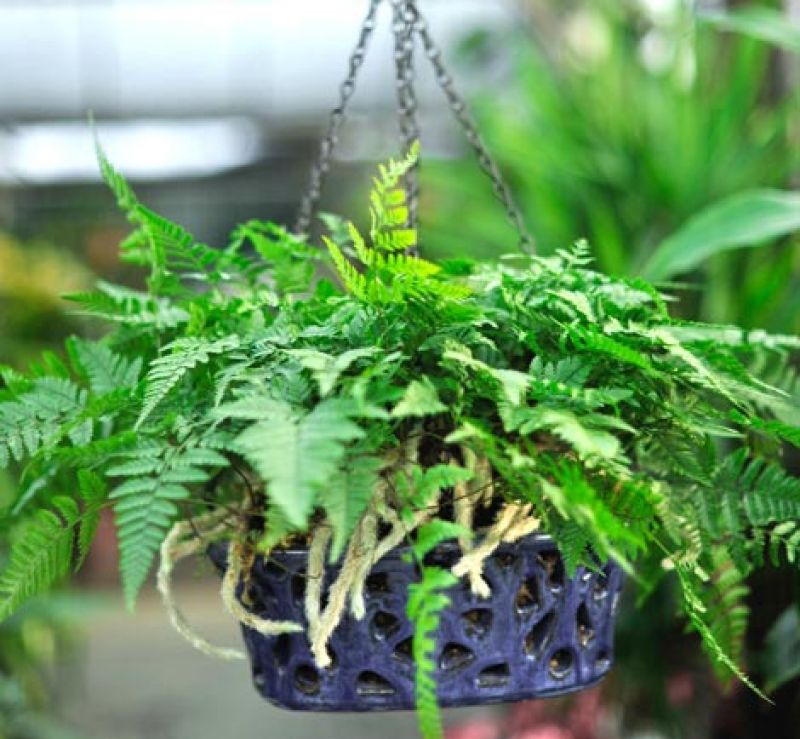
In January, when there’s not much to do in the garden but keep it tidy and order seeds, spend some time with an indoor plant favorite—ferns. There are endless varieties with gorgeous foliage that can brighten an interior space while filtering the air, too. Sure, some have a finicky reputation, but most can be virtually carefree when placed in the right environment. A bonus? They love humidity—a perfect pairing with our climate. Here are a few of our easy-to-grow favorites.
Spikemoss (Selaginella)
Although not a true fern, this relative has bold color that can range from brilliant chartreuse to a metallic blue green and mounds or trails depending on variety. It is easily propagated by division and loves humidity, especially when used in a terrarium. It looks great in pots and planted alongside Torenia and shade-loving coleus in the spring.
Light: Filtered light; can be moved into the garden in the spring in a lightly shaded area.
Water: Does not like to dry out. Benefits from misting. Soil: Likes well-drained soil. Does not like to be over-potted (in too-large a container).
Temperature: Can tolerate cooler temps, from 55 to 65 degrees.
Fertilize: Feed liquid fertilizer at half strength monthly during spring and summer.
Rabbit’s-Foot Fern (Humata tyermanii)
This fern gets its unique name from its fuzzy rhizomes (modified stems) that travel across the soil’s surface and over the pot’s edge. The dark green fronds are delicate in appearance but leathery to the touch. Looks fantastic in a hanging basket or decorative pot.
Light: Filtered bright light; no direct sun
Water: Likes to be damp but not soggy. Cut back on water in the winter. This fern loves to be misted. Increase humidity by using a tray of water with pebbles.
Soil: Rich, well-draining potting soil. Let fern fill entire pot before placing in a larger pot. Do not bury the rhizomes.
Temperature: 65 to 75 degrees Fertilizer: Feed liquid fertilizer monthly and at half strength during spring and summer growing season.
ÎBird’s Nest Fern (Asplenium nidus)
This elegant variety has highly structured, brilliant green fronds that radiate in a rosette pattern, reminiscent of a bird’s nest. Common to a rainforest canopy, this fern is a showstopper as a tabletop centerpiece and does well on a shaded patio in the warmer months.
Light: Filtered, avoid direct sun. Place in a north-facing window.
Water: Likes to be damp, but not soggy. Do not let it dry out. A lack of humidity will turn the leaves yellow. To increase humidity, rest the potted plant in a tray filled with pebbles and water. Does not enjoy misting.
Soil: Loose, well-draining soil high in organic content. Does not like to be over-potted (in too-large a container).
Temperature: 70 to 80 degrees Fertilizer: Feed liquid fertilizer monthly and at half strength during the spring and summer growing season.